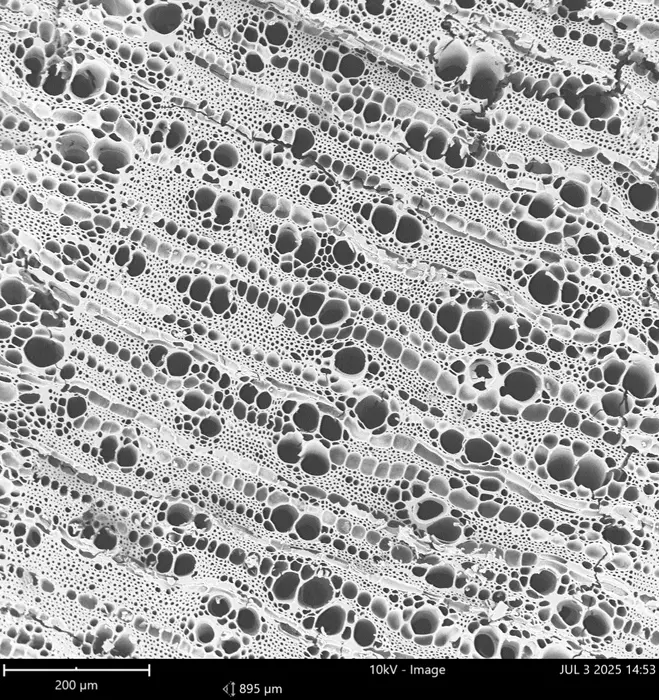In a groundbreaking study published in PLOS One, researchers have unveiled new insights into ancient agricultural practices in the Middle East, revealing that Bronze and Iron Age farmers prioritized viticulture—grape cultivation—over oleiculture, or olive growing, during times of climatic fluctuations. This revelation challenges long-held assumptions about early horticultural priorities and sheds light on the cultural and economic underpinnings of ancient societies in the Levant and northern Mesopotamia.
This study leverages advanced isotopic analysis to examine over 1,500 charred remains of grape and olive seeds and wood samples spanning from the Early Bronze Age to the Iron Age, approximately 5,000 to 2,600 years ago. By analyzing stable carbon isotopes within these samples, the researchers were able to reconstruct historical water availability and irrigation patterns, revealing complex agricultural responses to environmental stressors. This approach provides a window into ancient human-environment interactions and the sophisticated management of water resources in semi-arid landscapes.
Stable carbon isotope ratios serve as proxies for the physiological water status of plants during their growth. In this study, variations in the isotopic signatures indicated changes in water stress across millennia. Early Bronze Age samples reflected seasonal fluctuations consistent with natural precipitation variability. However, from the Middle Bronze Age onward, the data pointed towards intentional irrigation efforts, especially for grapevines, highlighting a strategic investment in viticulture that allowed these crops to thrive even in drier, less favorable regions.
The evidence of irrigation is significant because it demonstrates not merely subsistence farming but deliberate agricultural intensification. Intensively irrigated grape cultivation suggests that wine production played a central role in the socio-economic structures of these ancient communities, likely serving as both a staple commodity and a valuable trade good. Such findings align with archaeological records indicating extensive trade networks linking the Levant with Egypt, Turkey, and throughout the Mediterranean basin.
Professor Dan Lawrence, senior author and archaeologist at Durham University, emphasizes the dual importance of olives and grapes in ancient economies, stating that these crops were vital as food sources and as commodities for regional and long-distance trade. The ability of farmers to modify irrigation strategies and crop choices in response to climatic challenges illustrates a sophisticated understanding of agricultural risk management and environmental adaptation dating back thousands of years.
This dual cropping strategy underscores the resilience of Bronze and Iron Age societies, highlighting their capacity to navigate environmental stresses dynamically. The prioritization of viticulture over oleiculture underlines the higher cultural and economic value assigned to wine, possibly related to social rituals, status symbols, and broader trade economies. Such priorities led to technological innovations in water management, including the potential development of irrigation infrastructure supporting more intensive cultivation.
The geographic scope of the study encompasses the Levant and northern Mesopotamia, covering modern-day Lebanon, Jordan, Israel, Palestine, Syria, Turkey, and northern Iraq. These regions, characterized by diverse climates and highly variable precipitation, posed significant agricultural challenges. Understanding how ancient populations adapted to these challenges is invaluable for reconstructing historical land-use practices and the evolution of agricultural landscapes.
The integration of archaeobotanical data with isotope geochemistry in this research represents a cutting-edge methodological advancement in paleoeconomic studies. It moves beyond qualitative assessments of past farming by providing quantitative measures of water use, thereby offering concrete evidence for irrigation and resource management. Such interdisciplinary approaches are opening new pathways for understanding ancient sustainable agriculture amidst fluctuating climate regimes.
Moreover, the findings resonate with contemporary concerns regarding agricultural resilience and resource allocation in the face of climate variability. The parallels between ancient and modern challenges underscore the long history of human ingenuity in managing scarce water resources and optimizing crop yields. These insights enrich our broader understanding of how past civilizations confronted environmental uncertainty and maintained socio-economic stability.
The study was conducted through an international collaboration between the University of Tübingen in Germany and Durham University in the United Kingdom, incorporating expertise from archaeology, earth sciences, and paleoenvironmental research. Funding was provided by prestigious institutions such as the European Research Council under the EU Horizon 2020 program, the German Research Foundation, and the Fritz Thyssen Foundation, reflecting the high scientific value and impact of this research.
Beyond advancing historical knowledge, the results from this study contribute crucial data to fields such as ethnobotany, human geography, and environmental science, illuminating ancient land management and crop cultivation strategies. The revelation that ancient farmers selectively irrigated certain crops reveals complex decision-making processes informed by both environmental and economic factors.
In sum, this research significantly advances our comprehension of ancient agricultural dynamics, specifically addressing how climatic pressures shaped viticulture and oleiculture practices over millennia in the Middle East. It paints a vivid picture of agricultural resilience, adaptive management, and the socio-cultural significance of wine in early urban and rural economies. The prehistoric farmers of the Levant emerge not just as passive victims of climate but as active agents shaping their landscapes to meet economic and cultural needs.
Subject of Research:
Not applicable
Article Title:
Fluctuations of viti- and oleiculture traditions in the Bronze and Iron Age Levant
News Publication Date:
17-Sep-2025
Web References:
http://dx.doi.org/10.1371/journal.pone.0330032
Image Credits:
Credit: Dr Katleen Deckers
Keywords:
Archaeology, Homo sapiens, Ethnobotany, Cultural anthropology, Human geography, Land use, Cropland, Land management, Ecology, Plant sciences




